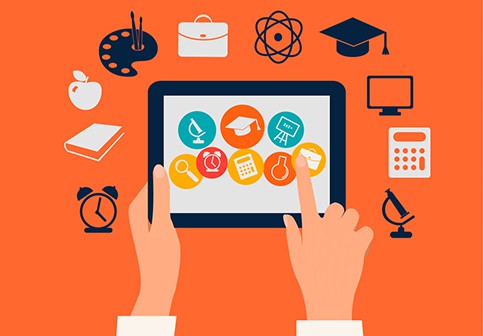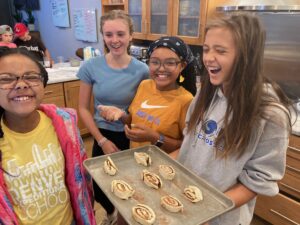Parent-Managed Learner Profiles Will Power Personalization

Jessie’s mom arrived at an elementary enrollment open house with a full record from the Montessori school she had attended for five years. The profile included competency-levels across all subject areas, pages of rich narrative describing her work habits and social-emotional factors, demonstrations of mastery, a record of participation in additional services like her weekly work with a speech-language pathologist and personal insights from her teachers on her strengths and weaknesses across the curriculum over her five years in the school.
Daniela arrives a month after school starts. Her mother, who speaks little English, indicates she completed third grade in another state but she does not have contact information.
Consider the advantage Jessie’s new teachers have with access to such rich and detailed information, they will be equipped to personalize her learning from day one. Unfortunately most students enroll in US schools like Daniela with little or no information about their academic journey. Some quick diagnostic tests can help but it would be far better if every student benefited from a rich portable education record.
Here’s another example: Vanessa receives speech-therapy at school as part of her Individual Education Plan. Vanessa also receives private speech therapy outside of school. The two therapists have never met, never spoken to one another, and her goals with the two are independent of each other. Vanessa takes gymnastics. Last week her private physical therapist joined in to support her and see what she is working on. But her school physical education teacher is out of that loop. If Vanessa’s mom managed her profile, she could connect the speech therapists and the contributors to her physical health.
The Department of Education has been advocating that every student (or parent of an underage student) to have access to his or her own academic data in a machine-readable format. That sounds great, but how would it work? What data would parents and students receive? What could they add?
We’ve been studying this issue for a couple years (and wrote a 2012 paper called Data Backpack that did a pretty good job describing the benefits of portable records). Following is an updated and more detailed summary of how parent and student managed profiles will work.
What is a learner profile? A learner profile includes three elements:
- Learning transcript: grades, courses (and/or learning levels), state and district achievement data
- Personalized learning information: supplemental achievement data, record of services received, feedback on work habits, record of extracurricular activities and work/service experiences.
- Portfolio of student work: collection of personal best work products.
Why would a parent want to manage a learner profile? There are at least five compelling reasons for parents (i.e., parent/guardian) and young adults to actively cultivate a learner profile:
- Curiosity: gain access to all the information schools and tools generate about students;
- Control: to proactively manage your son/daughter’s educational transcript to improve their life options;
- Personalization: empower your son/daughter’s teachers, tutors, and tools with the information they need to begin personalizing learning experiences from day one.
- Options: as the number of learning opportunities increases a comprehensive profile will help students and parents to identify and make good decisions.
- College and career: a well-constructed portfolio of student work will help students gain access to the best options after high school. Teaching young people to manage a positive career profile will be a valuable lifelong skill.
How would a parent manage a learner profile? A parent would download a free web and/or mobile application that would allow them to access their son/daughter’s information from the school district (or network). Parents would have access to transcript data (grades, courses, and test results), they would not have the ability to edit them but they could add comments that may help explain gaps, events.
Parents and students 16 (or perhaps 18) and older would have read/write access to the personalized learning information. They could give a tutor, an online learning teacher, or summer school provider access to the profile and allow them to make contributions. Parents and young adults could observe district records but not change district/network information. Parents and their agents (e.g., tutors) could make additions or comments regarding:
- record of special services received
- supplemental achievement data
- feedback on work habits and social skills
- extracurricular activities
- work and service experiences
A parent could decide to hide data from future providers. For example, if a student completes a special education Individual Education Plan, a parent hoping for a fresh start in a new school may decide not to share that history. (However, a school could still obtain a full record from a prior school for up to three years.)
Students would collect a portfolio of personal bests. A teacher may also select representative work products to share with a student’s next teacher.
How would learner profiles work? Learner profiles wouldn’t actually carry all the data around, they would used linked data to see information from many different systems.
While there should be a common data standard for how information is shared, the definition of a learner profile will be rather fluid with lots of opportunity to customize.
Who would have access to a learner profile? Parents and older students could grant read or read/write permission to outside contributors. For example, a mentor could comment on a student’s interpersonal skills development during an internship. A tutor (or tutoring system) could award a badge to a student’s portfolio for demonstration of learning.
How much would it cost? The learner profile would be free to parents and students as a web and mobile application. Online stores (like Amazon, Google Play, Microsoft Store, Apple Store) are all likely to offer free parents apps given the opportunity to recommend and sell learning services and products.
Why would schools support learner profiles? Teachers will benefit from comprehensive portable profiles by gaining large amounts of information about new students. By contributing to learner profiles, they will enable supplemental programs, tutors, and online learning systems to make valuable contributions.
What about children with disconnected parents? As the number of learning options expands many students and families would benefit from a chosen guide. The Donnell Kay Foundation imagines a new system of education where learners create customized paths with advocates who work with them to connect their present learning to their desired future. This role of mentor/advocate/coach could benefit all students but particularly students without the benefit of engaged parents.
In some cases, parents/guardians will choose to allow designees (e.g., mentors, relatives) to manage learner profile privacy settings. Young people in the foster care and juvenile justice system may have a court (or state) appointed guide that would manage privacy settings.
Data Quality Campaign recently noted, “With access to current education data child welfare staff can help the highly mobile students in foster care achieve school success by providing support such as the following: helping with timely enrollment and transfer of credits if a school change is needed, identifying the need for educational supports, working with school staff to address attendance and discipline issues, and assisting with transition planning to post-school activities such as higher education.”
How would postsecondary profiles work? LinkedIn founder Reid Hoffman said a 21st century diploma, “Would accommodate a completely unbundled approach to education, allowing students to easily apply credits obtained from a wide range of sources, including internships, peer to peer learning, online classes, and more, to the same certification.” This “dynamic and upgradable” machine readable profile, “Should allow a person to convey the full scope of his or her skills and expertise with greater comprehensiveness and nuance, in part to enable better matching with jobs.” Hoffman obviously has interest in LinkedIn serving as the preferred market signaling platform.
Nonprofit IMS Global supported development of an Education and Career Positioning System championed by Lone Star College System in Houston. At a community college convening, Lone Star chancellor Richard Carpenter challenged the audience of community college leaders to transform what colleges can do for students by enabling students to, “Own the student record.” The Lone Star pilot was a good start. With foundation support a small state or group of school districts could pilot a parent controlled learner profile.
Online profile management is becoming important in every aspect of life, it’s a new digital literacy competency that every young person must learn to exercise. That starts with empowering parents to take charge of education data with a portable learning profile.
For more on learner profiles, check out:







Patty b. lamprinakos
I agree. Parents and students need to be aware of the massive data being collected. By taking control of your own data you give yourself strength in a world of information.
Tricia Whenham
I think you've hit on how tech is going to transform education in a huge way, by improving lines of communication between everyone involved in a kid's learning. Digital portfolios, especially ones that let parents participate in the process too, have a ton of potential to make this happen. I wish all these tech possibilities had been around while I was still teaching in the classroom!
Mark Devine
Hi Tom,
I have been developing The Learning Portfolio over the last three years. I have been in contact with GettingSmart.com over the last year to attempt to get feedback from yourself. The platform enables triangulation and transfer of data between students, teachers and parents/carers. The functionality of the system encompasses many of the advantages of personalising learning you have mentioned in this article and it is still only in its prototype phase! Please feel free to have a look at what my students and I have been up to at Classroom 21 on Facebook as well as @Room_Twenty1 on Twitter. Please feel free to see our platform at www.thelearningportfolio.com. My students and I would appreciate your feedback. Thanks Tom.
Mark Devine.
Replies
Tom Vander Ark
It looks like nice portfolio system Mark
Alesha
Hi Tom,
Be sure to check out SmartEdTech. They have developed a product that targets special educations students but it could used for any child. It is common core aligned and has IEP reporting built in.
They just launched an iOS app but have been in the Android market for few years now. Happy to connect you with the CEO if you are interested in learning more.
Best,
Alesha
Replies
Tom Vander Ark
Thanks Alesha, looks good